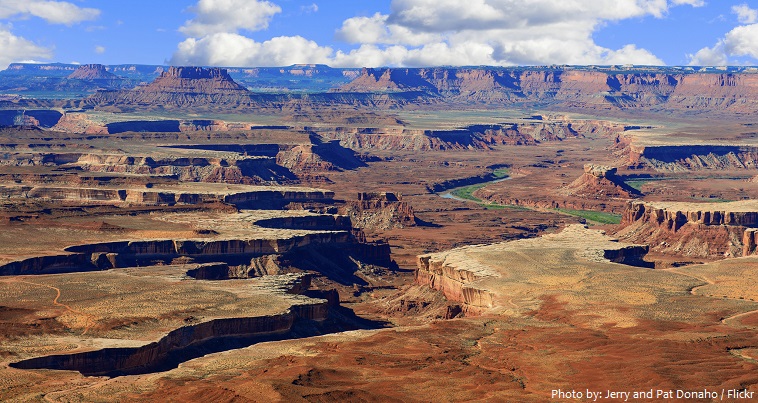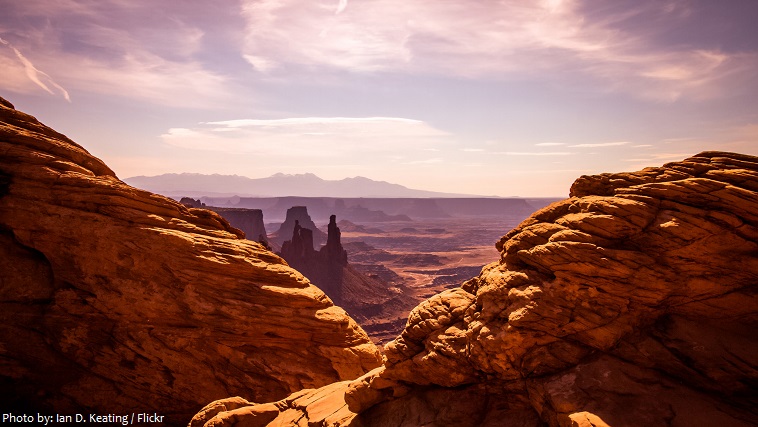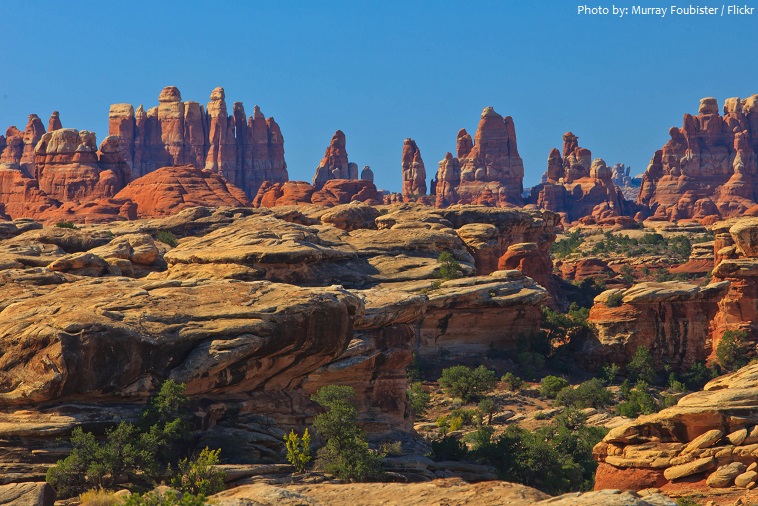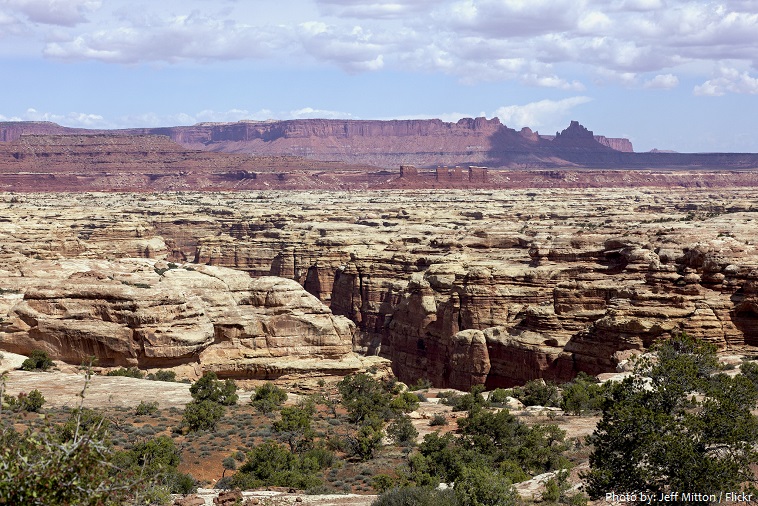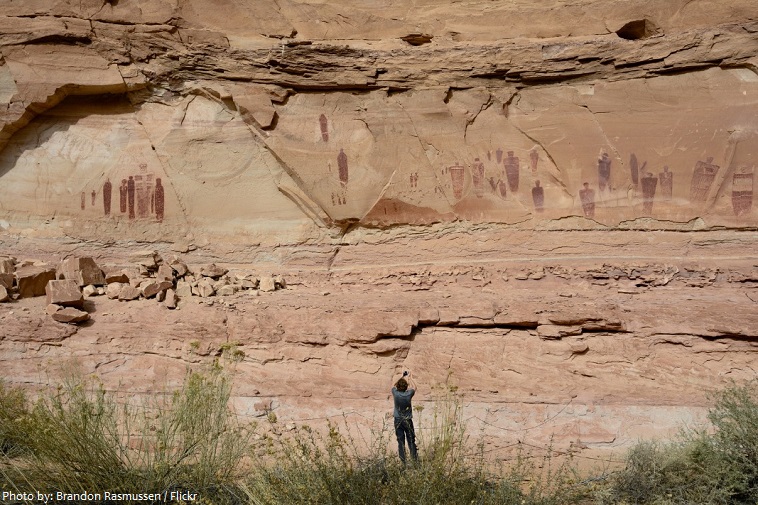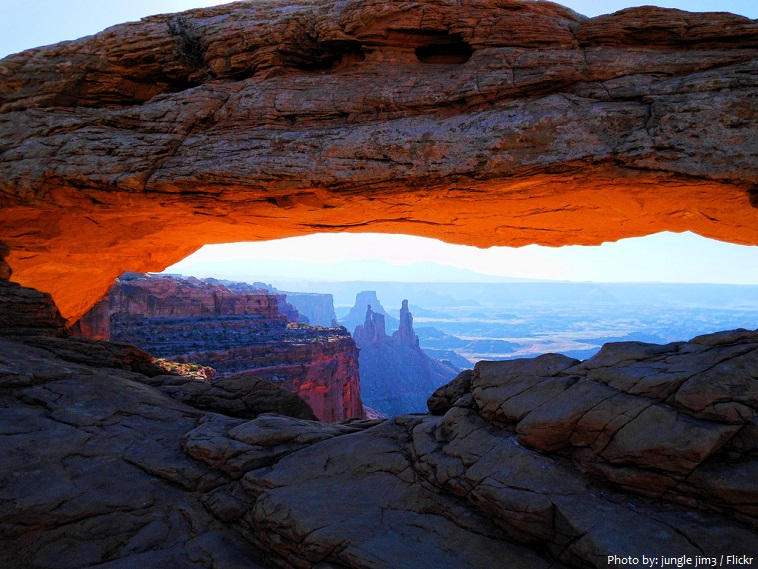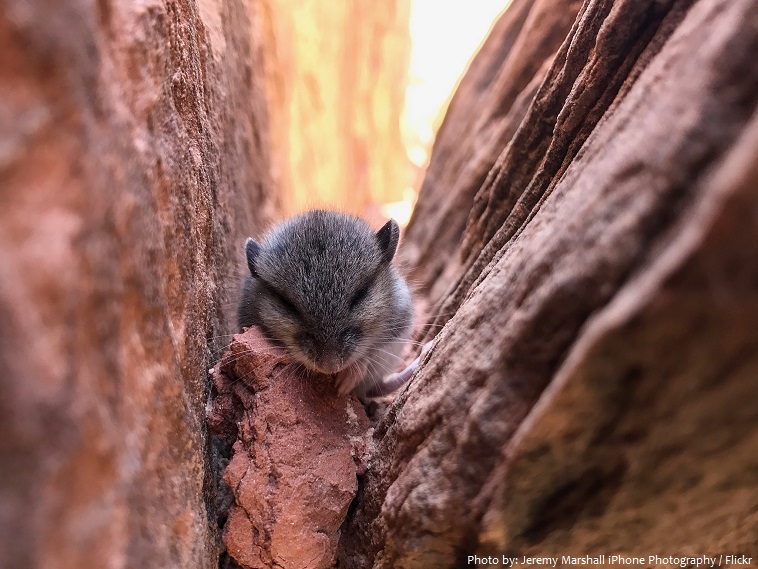Canyonlands National Park is a United States national park located in southeastern Utah.
On September 12, 1964, President Lyndon B. Johnson signed Public Law 88-590 establishing Canyonlands National Park.
Canyonlands National Park covers an area of 1,366 square kilometers (527 square miles) or 136,600 hectares (337,546 acres).
The park preserves a colorful landscape eroded into countless canyons, mesas, and buttes by the Colorado River, the Green River, and their respective tributaries.
The park consists of two portions: the main portion, which comprises the bulk of the park’s area, and the detached and considerably smaller Horseshoe Canyon unit.
The main portion is divided into three sections: the Island in the Sky (northern and central), the Needles (southern), and the Maze (western); Glen Canyon National Recreation Area adjoins the entire western border of the Maze.
The Island in the Sky district is a broad and level mesa to the north of the park between Colorado and Green river with many overlooks from the White Rim, a sandstone bench 366 meters (1,200 feet) below the Island, and the rivers, which are another 305 meters (1,000 feet) below the White Rim. Accessible from the north by a paved road, the mesa lies at an elevation of 6,000 feet (1,830 meters), and its overlooks, including Grand View Point, provide spectacular views of the canyons below.
The Needles district is located east of the Colorado River and is named after the red and white banded rock pinnacles which dominate it, but various other forms of naturally sculptured rock such as canyons, grabens, potholes, and a number of arches similar to the ones of the nearby Arches National Park can be found as well.
The Maze district is located west of the Colorado and Green rivers, and is the least accessible section of the park, and one of the most remote and inaccessible areas of the United States.
Horseshoe Canyon, located about 13 kilometers (8 miles) west of the rest of the park, was added in 1971. It is noted for the prehistoric pictographs at an area called the Great Gallery, which is accessible mainly by trail from the north.
The most famous arch in the park is Mesa Arch; it features as one of the standard desktop backgrounds on Windows 7 in the Landscapes section.
People have been visiting this region for more than 10,000 years.
Over time, many different groups have moved in and out of the area in concert with the availability of natural resources and the technology for exploiting those resources. You can find sign of their travels in the intriguing rock art they’ve left on canyon walls.
Though the natural quiet of Canyonlands often creates the impression of lifelessness, many animals live in the park.
Almost 50 species of mammal are known to live in Canyonlands including black bears, coyotes, skunks, bats, elk, foxes, bobcats, badgers, two species of ring-tailed cats, pronghorns, and cougars.
At least 273 species of birds inhabit the park. A variety of hawks and eagles are found; there are also several species of owls, grebes, woodpeckers, ravens, herons, flycatchers, crows, bluebirds, wrens…
Along with cactuses and sand dunes, snakes and lizards are icons of the desert. The only reptiles found in Canyonlands are snakes and lizards, underappreciated, sometimes feared, animals that play an important role in the high desert ecosystem.
Canyonlands National Park contains a wide variety of plant life, including 11 cactus species, 20 moss species, liverworts, grasses and wildflowers. In the moister areas, with cottonwoods, tamarisks, and willows found along riverbanks.
Hikers, mountain bikers, backpackers, and four-wheelers all enjoy traveling the rugged, remote trails within the Park.
Canyonlands National Park has about 800,000 visitors per year and is open year-round.

